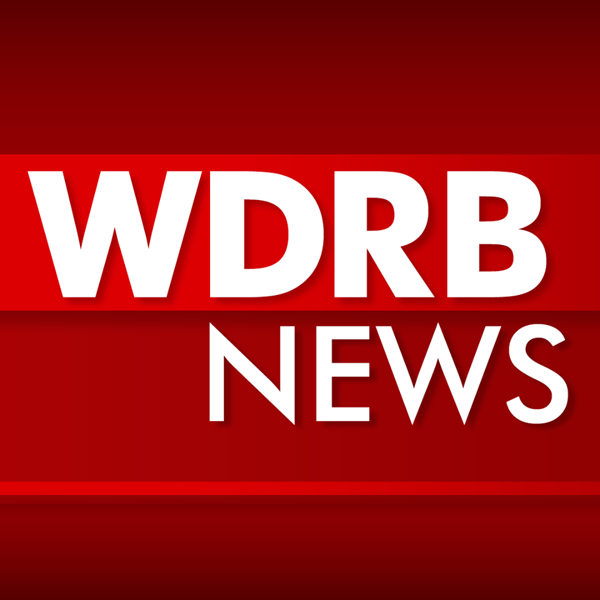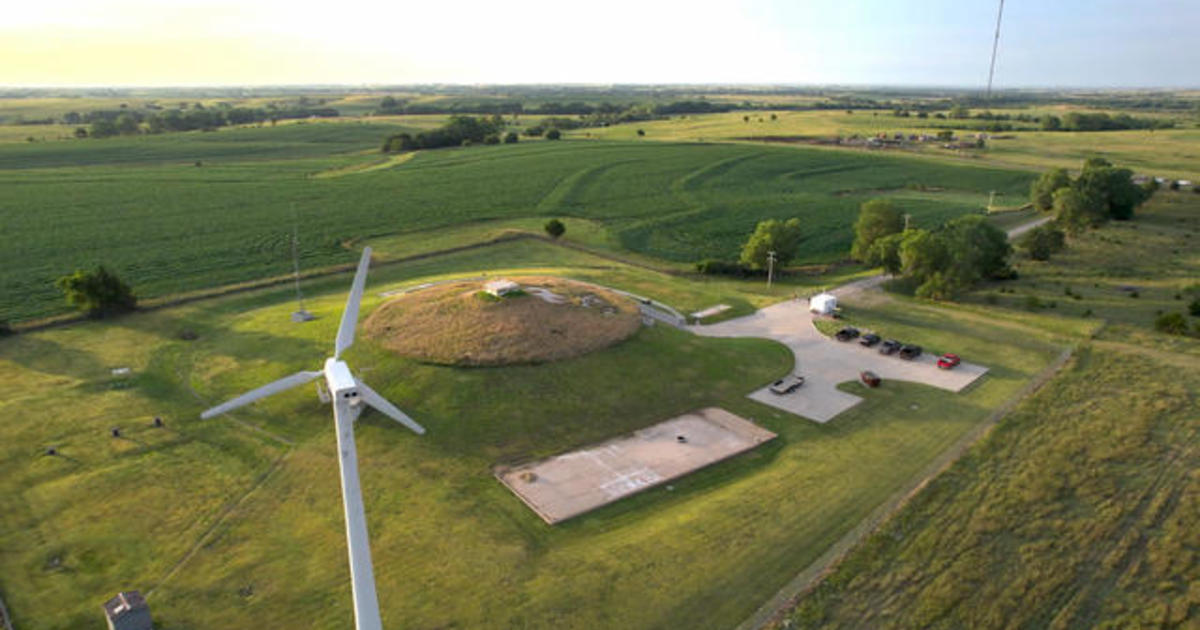
Louisville, KY (40203)
Today
Sunshine continues. Still chilly.
Tonight
Cold
Updated: November 14, 2022 @ 8:16 am
Nonstop Worldwide Prepper News and Community – Join and add your own news!

The weather is changing, and we could see wintry precipitation in the forecast at any time. With that possibility in mind, the owner of Tucker’s Automotive in Godfrey is offering some tips for area motorists. There are a number of things you should consider when dealing with winter driving.
There are several things you need to do to winterize your car. One is to make sure your headlight lenses are as clear as they can be. He says you can fix the cloudy headlights with a do-it-yourself kit, or they can do it for you at the shop. Chuck Tucker tells The Big Z you should also pay attention if you start hearing a squealing noise under the hood.
Tucker says you should also keep an eye on your tires, and make sure there is enough tread to handle the inevitable snow and slush. Batteries don’t like the cold weather, so you should get that checked as well.
Are you ready for a disaster?
When I was growing up, I read books like Alas Babylon (story in Florida), Warday and Out of the Ashes — all with a theme of post-nuclear war America.
The Hardy Boys just didn’t do it for me.
Plus, it was the ’80s and we lived every day with the threat of those in Moscow deciding whether to destroy the earth or not (they are at it again), so it seemed appropriate reading. These books were an early crash course in doomsday prepping for me — it’s interesting to see what prepping has evolved into in 2022.
There are prepping TV shows and conferences, and you don’t have to look hard for materials — you can buy 60 days of emergency food at Home Depot.
It’s gotten so mainstream even the Kardashians have endorsed bug-out bags and survival kits for functionality and style.
Gone are the days of preppers stereotyped as militant types. One of President Barack Obama’s former innovation advisers, Silicon Valley executive John Ramey, discussed his thoughts as an expert in preparation for this week’s 60 Minutes.
His advice? Be ready to be your own first responder in a crisis.
There are lots of obvious reasons survival gear is becoming mainstream as yet another storm is barreling down on Florida this week.
Not to mention pandemics, fires, and cyberattacks on our infrastructure, each making the reality of being without the basics a genuine possibility.
For us in Florida, storm-related power outages are a reality every year. One doesn’t have to look back far to North Florida’s last multiple-day power outage: Hurricane Hermine, three days without power; Hurricane Michael, it was four days.
As for statewide, throw in the toilet paper shortage of 2020, no gas available following the Colonial Pipeline cyberattack, and the devastation of Hurricane Ian just this year and you can see why it’s important to be ready for anything.
Too many Americans are like me in 1998. I was riding out a storm in Destin with a band I was on tour with — the Charlie Mars Band. Our day of disaster prep went like this: Play golf on the water, watch the storm come in, and go by the convenience store to gather chips, Duncan Hines cake mix and ravioli (and beer).
Despite the storm not being severe, our power went out fast. So, we ate chips and drank beer.
I think Charlie wrote a song as we stared at the goods that required power to cook.
Luckily, that situation was mild, but when the real thing hits, it’s no joke.
Water, food, meds, a full tank of gas, cash, comfortable shoes, and communication tools — these are the things you need to be thinking about. A full checklist is available from the State of Florida.
There are certain levels of preparedness.
For a million dollars, you can go ahead and pick up a doomsday condominium in Kansas and ride out a storm, war or pandemic. You may have seen this on 60 Minutes; they turned an old missile silo into a luxury prepper’s paradise, with a gun range, pool and theater to make sure their guests are pampered in any situation.
The facility’s owner also reiterated that preppers these days come from all ends of the country and political spectrum with any pre-existing stereotypes going out the window. He also mentioned all the residents showed up at the bunker during the pandemic, so it is battle tested.
I think a bunker would be a hard pass for me but there is certainly nothing wrong with having some necessities in the car and house when needed.
Personally, a solar-powered phone charger is a no-brainer; you can get them cheap anywhere.
If you’d like to learn more, Elkton, Florida has a summit in April 2023 where you can check out more details on self-reliance and disaster preparedness.
They have some really cool firsthand discussions on gardening, gun safety, hunting, and lots of other workshops.
Just like in the ’80s, the Russians are threatening the world yet again with nuclear weapons. While we would assume the idea of mutually assured destruction would keep even the most unstable world leaders (see Vladimir Putin and the North Korean guy) to not even think about pressing the button. But who knows how a madman or woman sees things?
As you read this, Swedish scientists say there is a 17% chance of a global nuclear war. If you want to read more and not sleep tonight, dive in here.
They also say (in theory) solar flares could wipe out our power grid with an electromagnetic pulse, like what a nuclear weapon does when detonated in the atmosphere; plus, of course, let’s not forget cyberattacks against our infrastructure.
Today’s column may not win the Feel-Good Column of the year, but on the plus side, the odds of a worldwide catastrophe are low.
On the negative side?
Odds are very high that a fire, hurricane or another pandemic could arrive on your doorstep any second. So, let’s confirm you have more than Duncan Hines Cake mix and beer in the house.
Hopefully, you will be more prepared for the next disaster than 1998 me.
___
Blake Dowling is the CEO of Aegis Business Technologies. He can be reached at [email protected].
Post Views: 0

“It appears that there will be a lot of leaf fall this year; in previous years, it has come at a faster rate, which can be a real factor in flooding, and our leaf collection program that we do every year in those primitive areas before the rain event, we try to clear them out to minimize any impacts that do occur,” said Jonathan Dean, the Public Service Manager for the City of Charlottesville.
HARRISONBURG, Va. (WHSV) – With the remnants of Hurricane Nicole heading up our way come Friday, you want to make sure your home’s gutters don’t have any issues with the heavy rain our area will see.
This storm comes at a time of the year when gutters can be more clogged mainly because of fallen leaves that were on the trees not too long ago. If there is plenty of rain and your gutters are filled with leaves, the gutters will likely fail to divert water from your home which can cause all sorts of problems like mold and mildew collecting and flooded basements.
Charles Sargent, a sales associate at Rocking R Ace Hardware in Harrisonburg, said there are a few things you can do to prevent that from happening.
“If your gutters are full of leaves, you can use one of these [cleaning wands], hook it to your garden hose, and wash your gutters out. Once you get your gutters clean, we have foam pads that you can put in your gutters that will divert the leaves,” said Sargent.
/cloudfront-us-east-1.images.arcpublishing.com/gray/YG4GF6N5ZFDZ7CXRZNTKTQS54I.bmp)
Sargent said the best way to find out if your gutters are clean is to run water through them to ensure that water is flowing out.
Copyright 2022 WHSV. All rights reserved.

With Daniel Lippman
HOW K STREET HAS BEEN PREPPING FOR THE MIDTERMS: Today’s elections are all but certain to usher a new party into power in at least one — if not both — chambers of Congress, a shift that stands to impact virtually every entity that turns to K Street to advance its causes in the Capitol.
— The downtown community has been preparing for months for the likely change in power, gaming out which issues Republican majorities might prioritize, snapping up GOP aides with ties to leadership or else touting their existing ones, and preparing clients who might have targets on their backs for grillings on Capitol Hill.
— “It’s going to be a different Congress for a lot of reasons,” said Tim Pataki, a partner at the GOP lobbying firm CGCN, alluding to Republicans’ growing rift with swaths of corporate America. “I think it’s fair to say helping out corporate America is not at the top of the priority list.”
— “I think generally, the conventional wisdom is that Republicans are the party of CEOs and executives, and I don’t think that can be further from what’s actually going to be the case next Congress,” added John Stipicevic, another lobbyist at CGCN who like Pataki previously worked for House Minority Leader Kevin McCarthy, the likely next House speaker.
— Ken Spain, a partner at Narrative Strategies and former GOP aide, argued that while “the Republican takeover will be a win for the business community overall,” it likely won’t come without a little heartburn first. “You can’t just dust off the old playbook because Republicans are taking over Congress.”
— “There are industries that will have to grapple with a new contingent of populist-minded Republicans,” Spain said, adding that the party’s evolution means “it’s going to require more sophisticated and nuanced approaches to influencing Congress.”
— With the GOP poised to come back into power, companies are now looking to rebuild their relationships with Republicans, which soured further after corporate PACs swore off political contributions to those who voted against certifying the 2020 election results. Lawmakers took the freeze as “a lack of support from the business community — who has benefited over the years from Republican policies,” Pataki told PI.
— Even with President Joe Biden’s veto power serving as a check on Republicans’ legislative agenda, the party’s newfound subpoena power and the ability to set the agenda for oversight has clients looking for insight, noted Aaron Cutler, Hogan Lovells’ point person on congressional probes. That dynamic has K Street working to suss out what parts of Republicans’ agenda is “messaging and what’s real legislating,” Hogan Lovells’ Chase Kroll added, and from there determining “where does it impact the client?”
— Complicating things still further is that some congressional targets, like tech companies or U.S. companies doing business in China, will face scrutiny from both sides of the aisle for different reasons, Cutler said. “That’s gonna make it very difficult for somebody testifying before the Senate Judiciary Committee or the House Judiciary Committee next year to prepare for that, because literally, you’re gonna get punched from all sides.”
— At CGCN and elsewhere on K Street, there’s hope that estrangement between the business community and lawmakers, combined with Republican lobbyists’ network, can help juice business. “There’s nobody better than this firm” to help companies mend their reputations in the halls of Congress, Pataki said, describing the firm’s pitch to prospective clients.
— Ballard Partners’ Brian Ballard, who two years ago was emphasizing his firm’s bipartisan credentials, now is now highlighting his firm’s ties to lawmakers who could soon wield considerable power in a GOP-controlled Congress next year, listing off Florida Republicans in line to chair or sit on key committees.
— “We really are institutionalized with so many Republicans that came up through the Florida legislature or what have you, that are now in pretty senior places in Congress,” Ballard, a longtime Florida lobbyist and GOP fundraiser, said in an interview, adding that beyond the Sunshine State he’d fundraised for nearly every Republican senator up for reelection this year. “I think … our current clients are going to be very happily situated.” Still, he added: “Obviously business is going to be good for Republicans.”
Happy Election Day and welcome to PI. Send K Street gossip: [email protected]. And be sure to follow me on Twitter: @caitlinoprysko.
MY KEVIN’S MAN ON K STREET: “Jeff Miller is not a household name, but he stands to yield tremendous influence when the next Congress gets sworn into office,” POLITICO’s Hailey Fuchs writes in a profile of the Miller Strategies chief and longtime confidant of the likely next House speaker.
— “Should McCarthy end up as the next Speaker, Miller, a paid lobbyist for some of the biggest companies in America, stands poised to be the K Street operative with unmatched access. ‘Everyone else is a distant second,’ said Sam Geduldig, a fellow GOP lobbyist.”
— Even as Miller’s relationship with McCarthy “is about to pay off royally, Miller could face some hurdles in a Republican-run congress” as he balances “his work for a number of major corporate entities and a GOP leadership increasingly acrimonious towards Big Business.”
— But “Miller himself has proven valuable for the GOP on this front. He worked to assuage concerns of corporate donors in the aftermath of the Jan. 6 riot and to ensure the big dollar spigot remained open. National Republican Congressional Committee finance director Leigh Ann Gillis called Miller ‘the MVP of House Republican fundraising efforts this cycle.’”
CRYPTO MEGADONORS’ EXCHANGE HITS TURBULENCE: “The global crypto exchange Binancehas agreed to acquire Democratic Party megadonor Sam Bankman-Fried’s crypto exchangeFTX after the company was bludgeoned by a severe liquidity crunch over the past week,” POLITICO’s Sam Sutton reports.
— “FTX’s sudden downfall — which Bankman-Fried said won’t affect its U.S. subsidiary FTX US — is hitting the crypto ecosystem after the 30-year-old billionaire spent roughly $40 million on super PACs and political campaigns before the midterm elections.” The exchange’s co-CEO, Ryan Salame, has also poured money into the midterms, dumping more than $20 million into races on behalf of Republicans this cycle, according to data from OpenSecrets.
— “FTX has also lobbied aggressively in support of bipartisan legislation from leaders of the Senate Agriculture Committee that would put its exchange and other crypto brokerages and trading platforms under the direct oversight of the Commodity Futures Trading Commission.”
— Protocol’s Benjamin Pimentel notes that Binance’s rescue of its rival “follows a Twitter tit-for-tat between the two crypto giants over questions related to the finances of Alameda Research, the trading house started by Bankman-Fried,” with Binance’s chief executive hinting that there was more at play.
ANOTHER TRADE GROUP’S PAC PILFERED BY THIEF: The American Hospital Association’s PAC became the latest Washington trade group to report the theft of thousands of dollars from its coffers, Insider’s Dave Levinthal reports.
— “In a letter to federal regulators, American Hospital Association PAC’s treasurer acknowledged that the committee lost $12,650 in what its treasurer, Melinda Reid Hatton, described as a case of ‘fraudulent activity’ involving fake checks.”
— “‘The checks were written using the Committee’s bank account and routing number, but are in the name of a “Wendy Naylor,” listing an address in Florida,’ Hatton wrote to Federal Election Commission officials on November 7. ‘These are not real Committee checks, nor were they written on actual Committee check stock.’”
— Hatton “told federal officials there is ‘no reason to believe or suspect that anyone from American Hospital Association or the Committee participated in the fraud,’ which took place in July.” That’s the same month that an “unknown individual” stole nearly $37,000 from the Consumer Technology Association’s PAC, the committee said in an FEC filing in September.
— Curtis Swager has joined Dropbox as director of government affairs for the Americas. Swager was most recently with McCain Foods and previously served as chief of staff to former Sen. Cory Gardner.
— Jacqueline Tame will be PsiQuantum‘s first director of government affairs. She was most recently acting deputy director of DoD’s Joint Artificial Intelligence Center.
— Michael O’Brien has joined BSA | The Software Alliance as vice president of global public affairs. He was most recently vice president of public affairs and advocacy for the National Association of Manufacturers.
— Roya Rahmani and Julián Ventura are joining Albright Stonebridge Group as senior advisers. Rahmani is vice chair for public policy at Delphos, distinguished fellow at the Georgetown Institute for Women, Peace and Security and the former Afghan ambassador to the U.S. Ventura is the former Mexican deputy secretary of foreign affairs.
— Brian Wagner has joined Maxar Technologies as the company’s first director for public sector communications. He was previously the senior director for strategic communications at Peraton.
None.
Americans for Prosparody (Hybrid PAC)
Justice Tranquility Defense Welfare PAC (Super PAC)
RHEEM PAC (PAC)
Success Charleston (Super PAC)
Brownstein Hyatt Farber Schreck, LLP: Ka Joog
Capitol Solutions LLC (Md): Critical Labor Coalition
Capitol Solutions LLC (Md): Elevanta
Chartwell Strategy Group LLC: Tickpick,LLC
Clark Hill, Plc: Consolidated Safety Services, Inc.
Downs Government Affairs: Community College Of Denver
Dutko Worldwide, LLC: Fibernet Mercurydelta
Fbb Federal Relations: Rock And Rail, LLC
Hatez Capital: Hatez Capital
Liebman & Associates, Inc.: Nexus-1 LLC
Miller & Chevalier Chartered: American Property Casualty Insurance Association
Monument Advocacy: Guarding Against Pandemics
Ms. Gwendolyn O’Brien Donaldson: Carolina West Wireless
Summit Health Care Consulting: American College Of Osteopathic Internists
Venable LLP: National Rental Home Council
The Campbell Consulting Group: New Morning Foundation

With storm rolling into the Valle on Tuesday, it often means flooding and water on the roadways.
Riverside County tells News Channel 3 they’re actively working to prepare for flooding on the Valley floor.
“Areas where we have roadway flooding. They’re definitely monitoring the areas where we have recent burn scars, so that we can kind of assess everything that’s coming in and what our current state is,” said Shane Reichardt, Senior Public Information Officer for the County’s Emergency Management Department.
As for residents, there’s ways you can prep your home ahead of potential flooding.
“We encourage people to go to their nearest fire station pick up some sandbags. Most fire stations have sandbags available, you will need to get sand,” Reichardt said.
Cal Fire fire stations provide bags for you to fill up. You can find the nearest location to you here.
The County recommends placing them in front of your doors, garage and other areas that are typically prone to flooding.
“The sand that you put in the sandbag can be everything from sand. Worst case scenario, you can even use dirt,”Reichardt added, “It doesn’t necessarily have to be clean, like playground type sand, you can get sand and bags of sand from the local hardware stores. But, you can just use whatever’s available to you.”
The County recommends saving and reusing those sandbags for the next rainstorm since they can last about a season or two. If you are out and about on wet roads, be sure to drive slow and make sure your tires are maintained.
Watch for flooding, especially in the wash areas. If roads are closed, be sure to follow the signs.
“We want people to remember Turn Around Don’t Drown. It’s just not worth it. It puts them them at risk. It also puts our first responders at risk if they have to come out and rescue somebody that’s made that attempt to cross a flooded roadway.”

Watch CBS News
Be the first to know
Get browser notifications for breaking news, live events, and exclusive reporting.

Photo: Spencer Platt/Getty Images
What’s happening: Finding a turkey this year could be challenging for some shoppers, because of an avian flu outbreak that’s killed some 8 million birds already, according to the CDC and as reported by Axios’ Kelly Tyko and Emily Peck last week.
By the numbers: On top of that, the cost of essentially the entire Thanksgiving meal will be higher this year because of sky-high inflation.
Why it matters: There’s pent-up demand to celebrate big this year after two years of COVID waves forcing people to scale down holiday gatherings. Problem is, Americans are bound to face headaches at the checkout line if they’re hosting a dinner on Nov. 24.
Yes, but: Some local turkey retailers and providers say they prepared for the impact from the avian flu and plan to be well-stocked.
The avian flu has affected the turkey industry as a whole, similar to how it did in 2015, says Kyle Lock, marketing VP at Butterball, which is based in Garner, NC.
Neither would say how much inflation has impacted turkey prices since last year, though.
Story Views:
/cloudfront-us-east-1.images.arcpublishing.com/gray/DY7BDR2QKRGHXGGGVO2WHDIP7U.png)
LAKE CRYSTAL, Minn. (KEYC) – The Lake Crystal Wellcome Memorial-Nicollet Knights cross country team is prepping for their sixth state tournament appearance after winning its first section title in school history.
Boys cross country tournaments begin Saturday. For the Knights, they’ve won their first section title in school history but they are searching for something bigger, a state championship.
It’s been a long time coming for Knights head coach Doug Burns. As head coach for the boys cross country team for 30 plus years, this is the Knights first section title in school history. He is excited about the Knights accomplishments this season.
“It’s tremendous,” said Burns when asked how he felt winning the schools first section championship. “The boys really worked hard. This is a team that improved a lot throughout the season. We’ve made it to state, we were pretty good way good back in the 90′s, these kids weren’t even born; but we had five section second place finishes so this is our sixth time at the state meet in program history and this is a team that came on like gangbusters. I’ve said over and over that they ran out of their minds that day which we were really happy about.”
Knights senior captain Christian Fells feels the hard work and excitement not only from his teammates, but coaches as well.
“It’s been really great because the coaches have been wanting this for a while because I think we had the great season last year but we didn’t quite get where we wanted to be,” Fells said. “And then to see everything come together right when it mattered was nice and cool.”
As the state competition approaches, Fells understands preparation is key for a legendary state title run.
“Our goal this year was to qualify for state and get section title,” said Fells. “It was really nice to get that, now that with this week, we’ve been working on, not as hard of workouts but lesser stuff to get us more prepared and in shape and just run he best meet we can in state.”
The meet begins at 1 p.m. at St. Olaf College.
Copyright 2022 KEYC. All rights reserved.